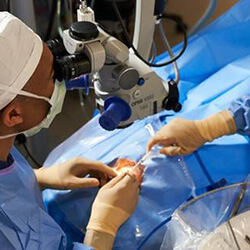 June is Cataract Awareness Month and we’re giving you our top billing and coding tips for cataract surgery. Cataracts are the leading cause of vision loss in the United States, affecting over 22 million people. To reduce the risk of an audit and get paid correctly and in a timely manner, it’s imperative that your documentation is correct.
June is Cataract Awareness Month and we’re giving you our top billing and coding tips for cataract surgery. Cataracts are the leading cause of vision loss in the United States, affecting over 22 million people. To reduce the risk of an audit and get paid correctly and in a timely manner, it’s imperative that your documentation is correct.
One of the biggest mistakes when billing for cataract surgery is billing for the same eye twice. It may sound obvious, but many practices have made this mistake. When billing the second eye in a post op period, append modifier -79 with the eye modifier (RT, LT). Always double check the claim prior to submission to verify the correct eye. Per Medicare Local Coverage Determinations (LCDs), the patient must fill out the VF-14, a commonly referenced scale of determining the visual effect of cataracts on a patient’s activity of daily living. Questions include:
- Driving during the day/night
- Reading small print on medicine bottles, telephone book, food labels
- Reading a newspaper or book
- Reading large print book or large print newspaper or numbers on a telephone
- Recognizing people when they are close to you
- Seeing steps, stairs, or curbs
- Reading traffic signs, street signs, or store signs
- Doing fine handiwork, sewing, knitting, crocheting, or carpentry
- Filling out forms
- Playing games such as bingo, dominoes, and cards
- Taking part in sports like bowling, tennis, golf
- Cooking
- Watching television
Other documentation you must include in the chart note: evidence of the patient’s preoperative best-corrected visual acuity; record of visual distortion or complaints of glare associated with functional impairment; documentation supporting visual acuity improvement with the removal of the cataract; a signed operative report; and, documentation showing the patient understands the risks, benefits, and expected outcomes of surgery, and most importantly, desires cataract surgery.
- 66984: Extracapsular cataract removal with insertion of intraocular lens prosthesis (one stage procedure), manual or mechanical technique (i.e. irrigation and aspiration or phacoemulsification); also known as ECCE. This is the standard method of cataract surgery where the natural lens (cataract) is removed along with the anterior shell. The posterior shell of the lens capsule is left in place.
Payment is per eye and is the number one procedure performed in ASC’s. For ultrasonic determination of intraocular lens power, use 92136 or 76519. - 66982: Extracapsular cataract removal with insertion of intraocular lens prosthesis (one stage procedure), manual or mechanical technique (i.e. irrigation and aspiration or phacoemulsification), complex, requiring devices or techniques not generally used in routine cataract surgery (i.e. iris expansion device, suture support for intraocular lens, or primary posterior capsulorrhexis) or performed on patients in the amblyogenic developmental stage.
Payment is per eye, secondary fixation of IOL is included. Complex cases are roughly 5% of cataract surgeries performed.
Indications for coding complex cataract surgery include:
- A miotic pupil that will not dilate sufficiently to allow operative access to the lens and that requires the insertion of one of the following: four iris retractors through four additional incisions; Beehler expansion device; a sector iridectomy with subsequent suture repair of; iris sphincter; or sphincterotomies created with scissors.
- The presence of a disease state that produces lens support structures that are abnormally weak or absent. This requires the need to support the lens implant with permanent intraocular sutures, or a capsular tension ring may be necessary to allow placement of an intraocular lens.
- Pediatric cataract surgery.


